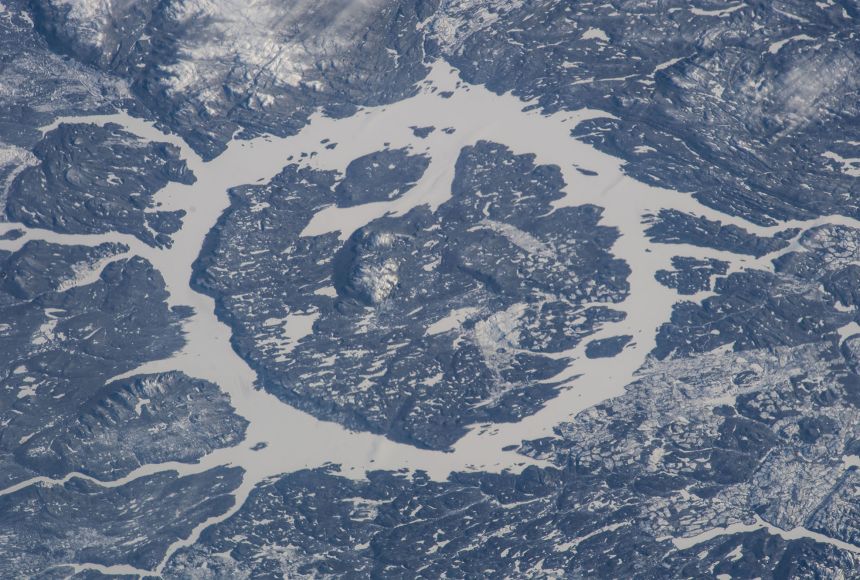We live on Earth’s hard, rocky surface, breathe the air that surrounds the planet, drink the water that falls from the sky, and eat the food that grows in the soil. But Earth did not always exist within this expansive universe, and it was not always a hospitable haven for life.
Billions of years ago, Earth, along with the rest of our solar system, was entirely unrecognizable, existing only as an enormous cloud of dust and gas. Eventually, a mysterious occurrence—one that even the world’s foremost scientists have yet been unable to determine—created a disturbance in that dust cloud, setting forth a string of events that would lead to the formation of life as we know it. One common belief among scientists is that a distant star collapsed, creating a supernova explosion, which disrupted the dust cloud and caused it to pull together. This formed a spinning disc of gas and dust, known as a solar nebula. The faster the cloud spun, the more the dust and gas became concentrated at the center, further fueling the speed of the nebula. Over time, the gravity at the center of the cloud became so intense that hydrogen atoms began to move more rapidly and violently. The hydrogen protons began fusing, forming helium and releasing massive amounts of energy. This led to the formation of the star that is the center point of our solar system—the sun—roughly 4.6 billion years ago.
Planet Formation
The formation of the sun consumed more than 99 percent of the matter in the nebula. The remaining material began to coalesce into various masses. The cloud was still spinning, and clumps of matter continued to collide with others. Eventually, some of those clusters of matter grew large enough to maintain their own gravitational pull, which shaped them into the planets and dwarf planets that make up our solar system today.
Earth is one of the four inner, terrestrial planets in our solar system. Just like the other inner planets—Mercury, Venus, and Mars—it is relatively small and rocky. Early in the history of the solar system, rocky material was the only substance that could exist so close to the Sun and withstand its heat.
In Earth's Beginning
At its beginning, Earth was unrecognizable from its modern form. At first, it was extremely hot, to the point that the planet likely consisted almost entirely of molten magma. Over the course of a few hundred million years, the planet began to cool and oceans of liquid water formed. Heavy elements began sinking past the oceans and magma toward the center of the planet. As this occurred, Earth became differentiated into layers, with the outermost layer being a solid covering of relatively lighter material while the denser, molten material sunk to the center.
Scientists believe that Earth, like the other inner planets, came to its current state in three different stages. The first stage, described above, is known as accretion, or the formation of a planet from the existing particles within the solar system as they collided with each other to form larger and larger bodies. Scientists believe the next stage involved the collision of a protoplanet with a very young planet Earth. This is thought to have occurred more than 4.5 billion years ago and may have resulted in the formation of Earth’s moon. The final stage of development saw the bombardment of the planet with asteroids.
Earth’s early atmosphere was most likely composed of hydrogen and helium. As the planet changed, and the crust began to form, volcanic eruptions occurred frequently. These volcanoes pumped water vapor, ammonia, and carbon dioxide into the atmosphere around Earth. Slowly, the oceans began to take shape, and eventually, primitive life evolved in those oceans.
Contributions from Asteroids
Other events were occurring on our young planet at this time as well. It is believed that during the early formation of Earth, asteroids were continuously bombarding the planet, and could have been carrying with them an important source of water. Scientists believe the asteroids that slammed into Earth, the moon, and other inner planets contained a significant amount of water in their minerals, needed for the creation of life. It seems the asteroids, when they hit the surface of Earth at a great speed, shattered, leaving behind fragments of rock. Some suggest that nearly 30 percent of the water contained initially in the asteroids would have remained in the fragmented sections of rock on Earth, even after impact.
A few hundred million years after this process—around 2.2 billion to 2.7 billion years ago—photosynthesizing bacteria evolved. They released oxygen into the atmosphere via photosynthesis and, in a few hundred million years, were able to change the composition of the atmosphere into what we have today. Our modern atmosphere is comprised of 78 percent nitrogen and 21 percent oxygen, among other gases, which enables it to support the many lives residing within it.
